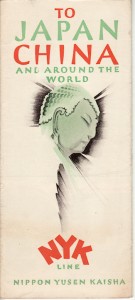Posted: April 11th, 2013 | No Comments »
Michael Wolf, of the excellent Hong Kong Corner Houses book, has just published a book of earth god shrines in Hong Kong…

Following the success of Hong Kong Corner Houses (2011), German photographer Michael Wolf continues with his collaboration with Hong Kong University Press to produce Small God, Big City. Michael again uses his creative eye to draw attention to overlooked objects in the visually rich urban environment of Hong Kong. This time, the object is the Earth God shrine, found commonly by the doorways of shops and homes throughout Hong Kong.
Through his visually stimulating and thought- provoking photographs, Michael challenges our sensitivity to seemingly familiar everyday things. An interpretative text for the photographs is authored by two familiar names: Lee Ho Yin and Lynne DiStefano, who are well-known academics and practitioners of heritage conservation in Hong Kong. The text leads readers to a better understanding of the topic and the meaning behind Michael’s photographs of Earth God shrines in urban Hong Kong. The topic of this book is timely, given the vulnerability of traditional beliefs and practices in an increasingly urbanised Hong Kong. It is hoped that Small God, Big City will provoke deeper thoughts on who we are and what we believe in, in this modern world.
Posted: April 10th, 2013 | No Comments »
A travel brochure issued in 1926 by Japan’s NYK shipping line to Japan, China and elsewhere in Asia. The original features a large colour map of the world showing the routes of, and rail connections, of the NYK lines. Above and below the map there are 16 photographic images illustrate the luxurious accommodation aboard the NYK liners – I’ll try and scan that in somehow. I’m sure you’ll agree – gorgeous cover…

Posted: April 10th, 2013 | No Comments »
Anyone who fancies sitting through a couple of hours of DPRK film can head over to O’Malley’s Bar in Shanghai this Thursday (11th) to see Centre Forward….courtesy of our good friends at Koryo Tours…

Posted: April 9th, 2013 | No Comments »
I have a certain fondness for the Hillman Minx as it was my dad’s first car (admittedly a lot later than the one below – a 1960s Series V). The first Hillman Minx was produced in England in 1932 and here’s an advert for the car in 1934 Shanghai so one of the initial models. I always wonder why anyone bought a British car in Shanghai when American and French ones were available. I mean, come on – I bow to no one in my patriotism for the British car industry but honestly….a Cadillac or a Voisin would be better. Still a Hillman Minx was not too shabby and Fraser Motor’s out on the Great Western Road (Yannan Road West) had a bunch for you see and try – and don’t forget (as many people identifying pictures and making films of old Shanghai invariably do) the city’s International Settlement correctly drove on the left until 1945 (when the GI’s couldn’t handle it and switched it over – Shanghai’s roads have been chaos ever since!!) s0 British cars, being left had drive, had a certain advantage.

Posted: April 8th, 2013 | 1 Comment »
Anne Swain Goodrich’s The Peking Temple of the Eastern Peak is a charming description of Peking in 1927 (though this edition published later). Goodrich was a missionary in Peking. She had been born in China, and she returned after receiving her education in the United States, an education that included graduate work at Columbia University’s Teachers College. Her husband, L. Carrington Goodrich, eventually became chairman of the growing young Department of Chinese at Columbia University, which eventually became the Department of East Asian Languages and Cultures.
Goodrich was a great collector of paper gods and created one of the finest collections in the West, most purchased from the famous Peking curio store Ren he zhi dian (Unity Among Men Paper Shop). This book is actually one of a three-volume collection she completed after leaving China – the paper gods collection is now part of the CV Starr East Asian Library at Columbia.

Posted: April 7th, 2013 | No Comments »
Applications are open again for the M Writer’s Residencies….

M Writer’s Residencies 2014-15
The M Literary Residencies have been established to disseminate a broader knowledge of contemporary life and writing in India and China today and to foster deeper intellectual, cultural and artistic links across individuals and communities.
Applications for 2014-15
Applications for the 2014-15 M Literary Residencies are now open and close on June 1 2013.
For application forms, click here.
For guidelines, click here.
Updates are available here and on our Facebook page. Results will be announced on October 15 2013.
Listen: Interview with Michelle Garnaut on M Literary Residency
Listen to an interview with Michelle Garnaut, CEO of M Restaurant Group, discussing the M Literary Residency and the M Restaurants on Hong Kong’s local radio station RTHK 3 (25 May, 2012), click here
The M Literary Residency
M Literary Residency Recipients for 2013-2014
The M Literary Residency is delighted to announce the recipients for the 2013-2014 Residency programs in China and India. Madeleine Thien has been selected for the China Residency, based in Shanghai, while Glenn Diaz  won the India Residency, based at Sangam House, outside of Bangalore.
Posted: April 7th, 2013 | No Comments »
A little diversion from the usual China history – my continuing series for Zed Books in London, Asian Arguments, has a new book out this April, China and the Environment, and I’m very pleased as it’s one that I envisaged publishing right back at the start of the series. I’ve admired the work Isabel Hilton, Sam Geall and the London and Beijing team at Chinadialogue have done for a long time and thought it would be great to get them to assemble a series of case studies that both showed the excellence of the repoirting and commentary they undertake on their website as well as emphasizing the main theme of the Asian Arguments series, which is to look at complex issues in Asia from the ground up rather than the more common 3,000 feet down viewpoint.
I think China and the Environment: the Green Revolution does exactly that with an Introduction on The return of Chinese civil society from Isabel Hilton and a series of essays
including on China’s environmental journalists by Sam Geall; The birth of Chinese environmentalism by Olivia Boyd; The Yangzonghai case and the struggle for environmental justice by Adam Moser; the case of Xiamen PX by Jonathan Ansfield (now of The New York Times) and Defending Tiger Leaping Gorge by one of China’s preeminent and pioneering green activists Liu Jianqiang.

The book is being launch in London on April 11 with a round table discussion….details below and ore details of how to book etc here
China and the Environment: The Green Revolution
Thu 11 Apr 2013, 6:00pm
Free Word Lecture Theatre
60 Farringdon Road
London EC1R 3GA
Telephone: 020 7324 2570
Fax: 020 7490 0566
info@freewordonline.com
Chinadialogue and Zed Books invite you to join the launch event for China and the Environment: The Green Revolution.
Edited by Sam Geall, Executive Editor of bilingual environmental website chinadialogue, and with an introduction by Isabel Hilton, China and the Environment provides a unique report on the experiences of citizens responding to environmental problems in contemporary China.
Isabel Hilton, Editor and CEO of chinadialogue, will chair a discussion about China’s ecological crisis and the role of civil society in addressing environmental problems. The panel includes:
Book launch begins at 6pm. Panel discussion and Q&A from 6:30-7.45pm. Drinks from 7.45-9.00pm
Advance praise for China and the Environment:
`This superb collection of vivid case studies gives plenty of evidence that Chinese citizens across the country are not going to sit down and do nothing while pollution slowly kills them. With detailed accounts of resistance against polluting corporations and colluding officials, this is an authentic and credible report from the great battleground of modern Chinese environmentalism – a battle over not just China’s air, but the air of the rest of the planet.’ – Kerry Brown, Professor and Director, China Studies Centre, University of Sydney
‘This is a superb and engaging book that explains how China is grappling with one of the most pressing issues facing our world today. In compelling fashion, the authors introduce us to the activists, journalists and lawyers who are fighting for cleaner air and water, and to the institutional obstacles that remain in their path. This is a must-read for anyone who has heard about an environmental protest in China and wondered not only what the real story behind it was, but also which way the story of China’s ‘green revolution’ is heading.’ – Gady Epstein, China correspondent, The Economist
Posted: April 7th, 2013 | No Comments »
Recently I was at the Adelaide Writers’ Week and had the opportunity to interview the biographer Anne de Courcy about her fascinating her new book The Fishing Fleet: Husband Hunting in the Raj. The Australian Monthly and Slow TV videoed the session on a very hot Adelaide March day and you can view it here….








